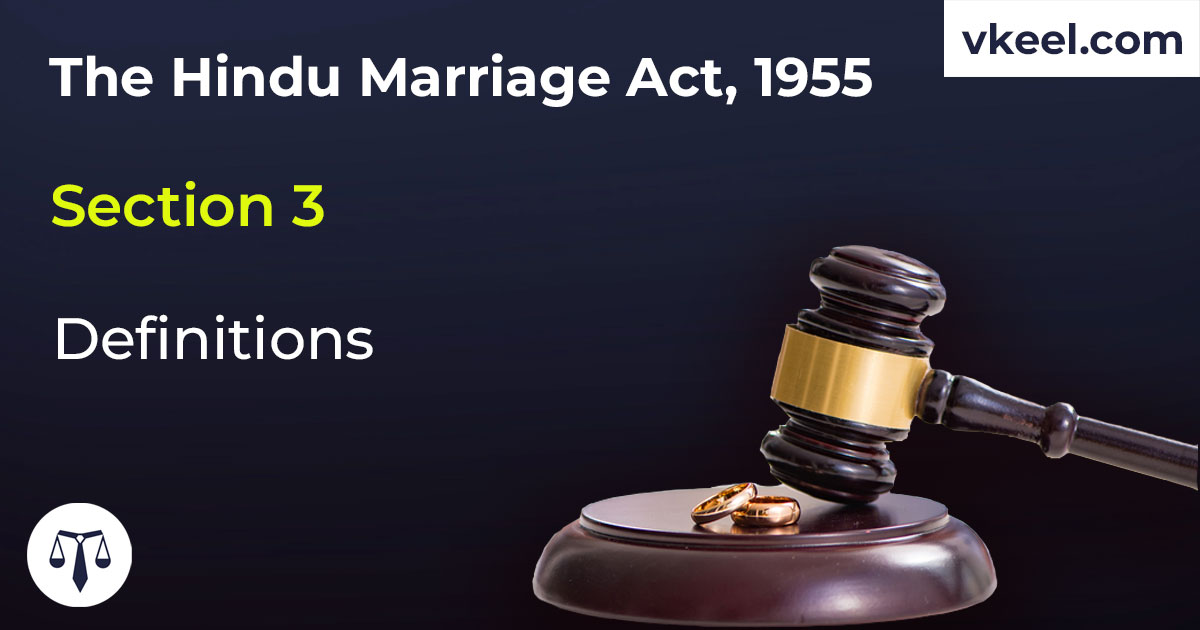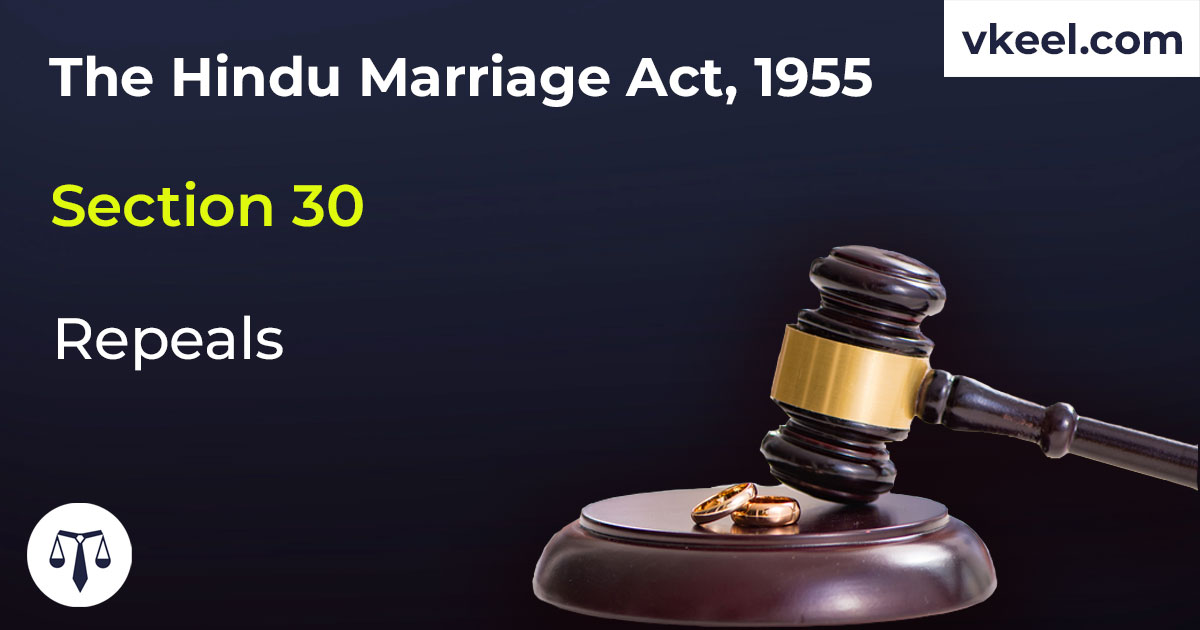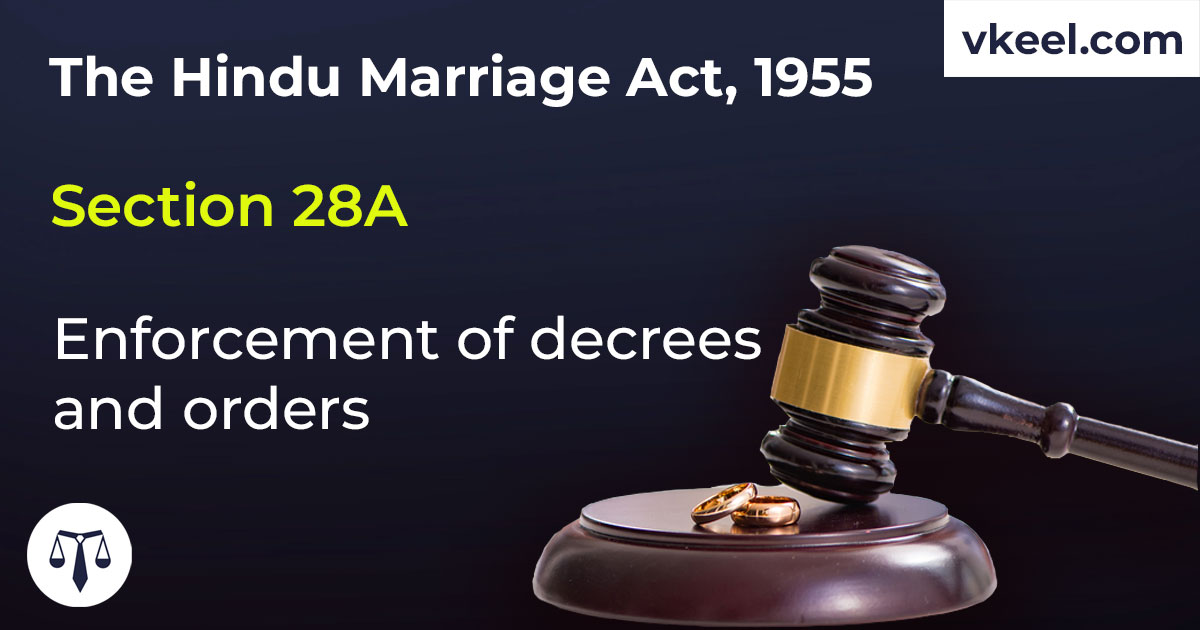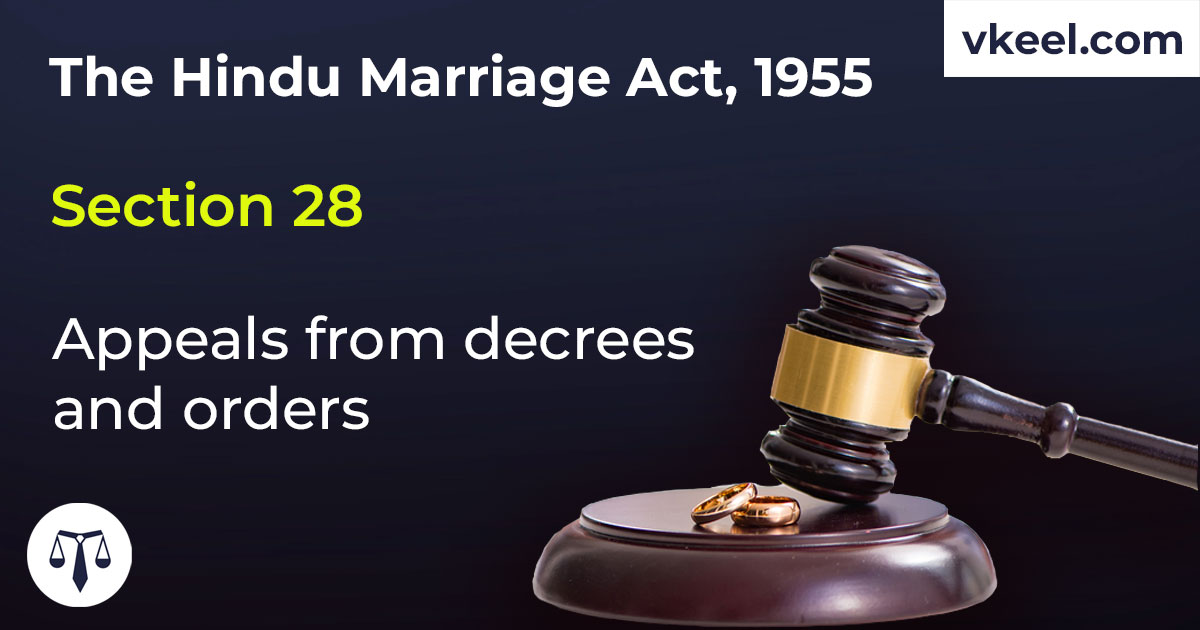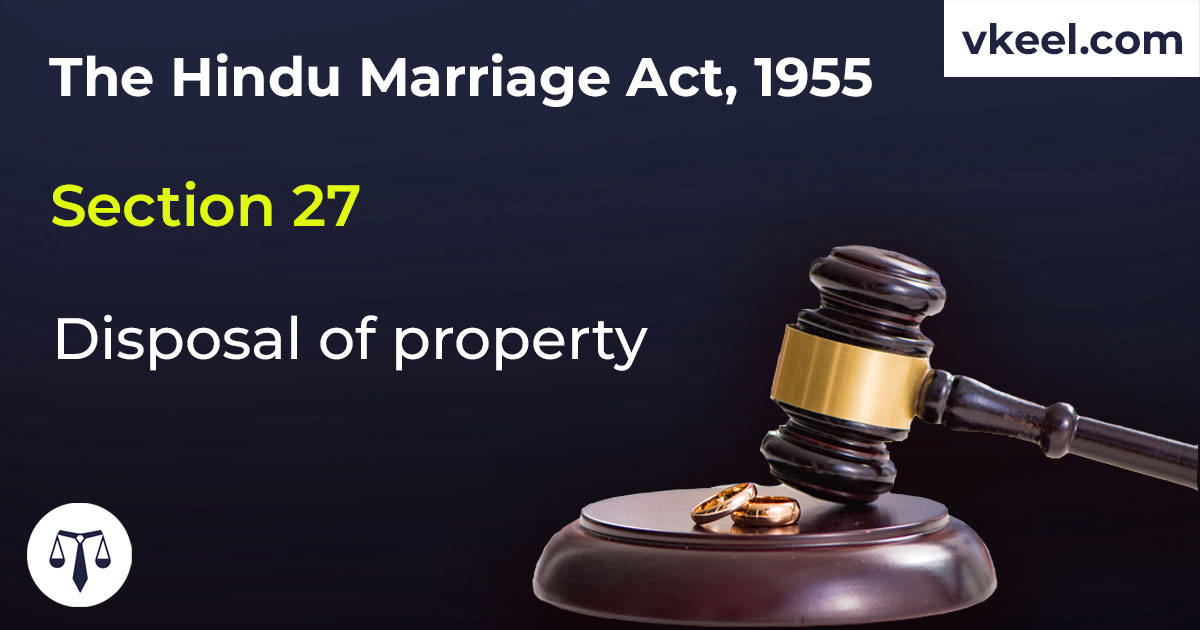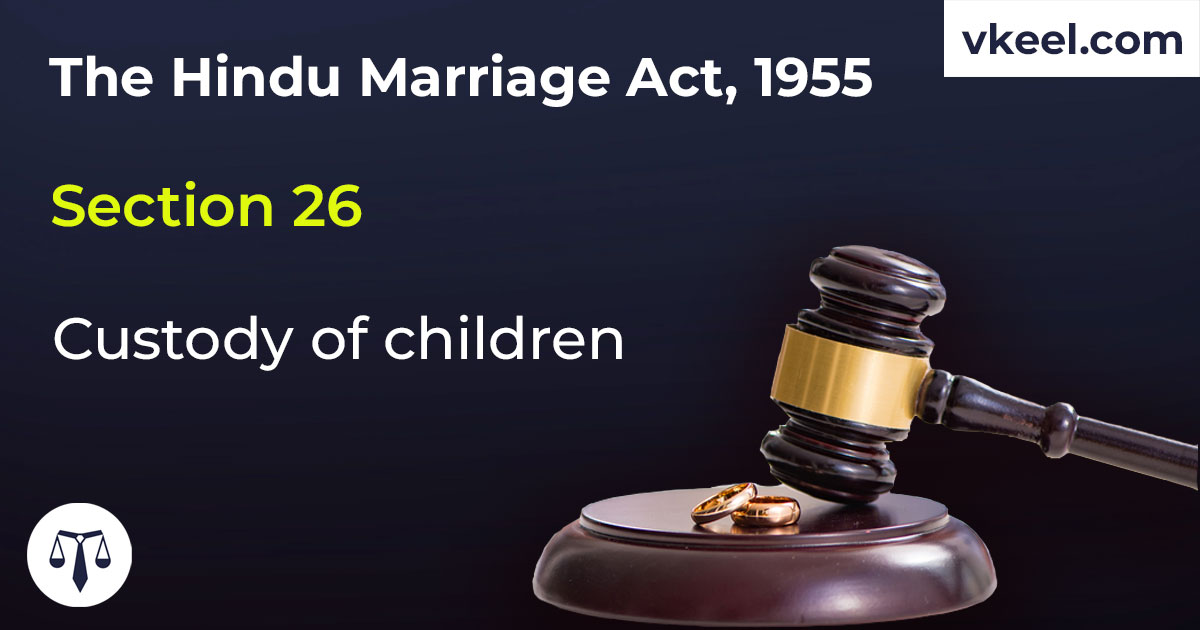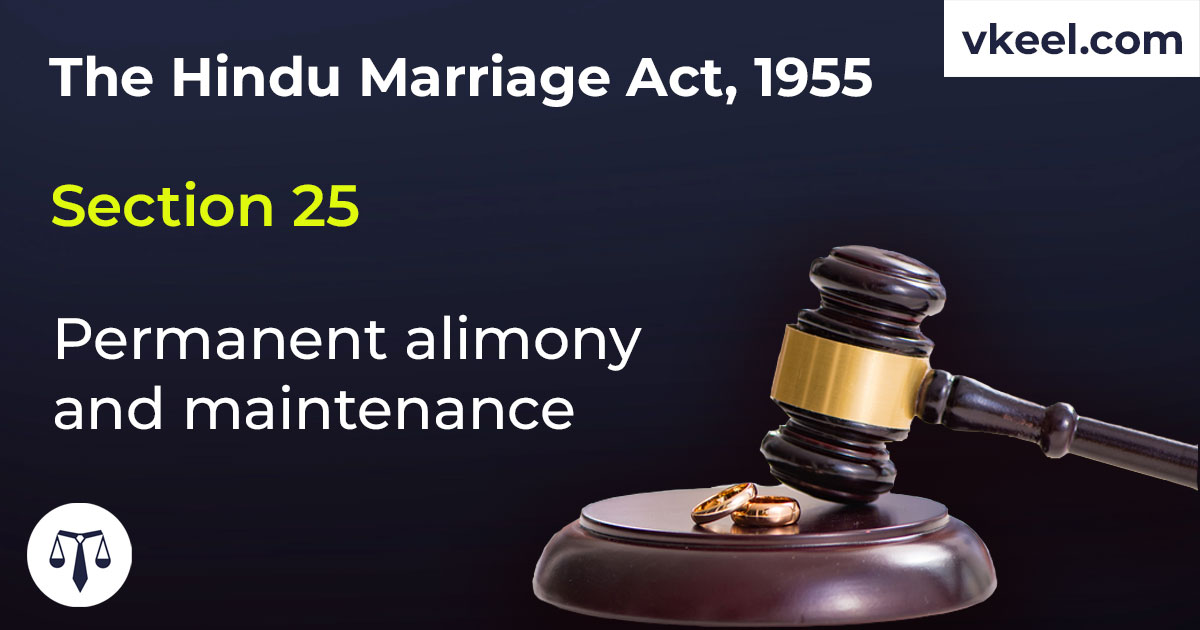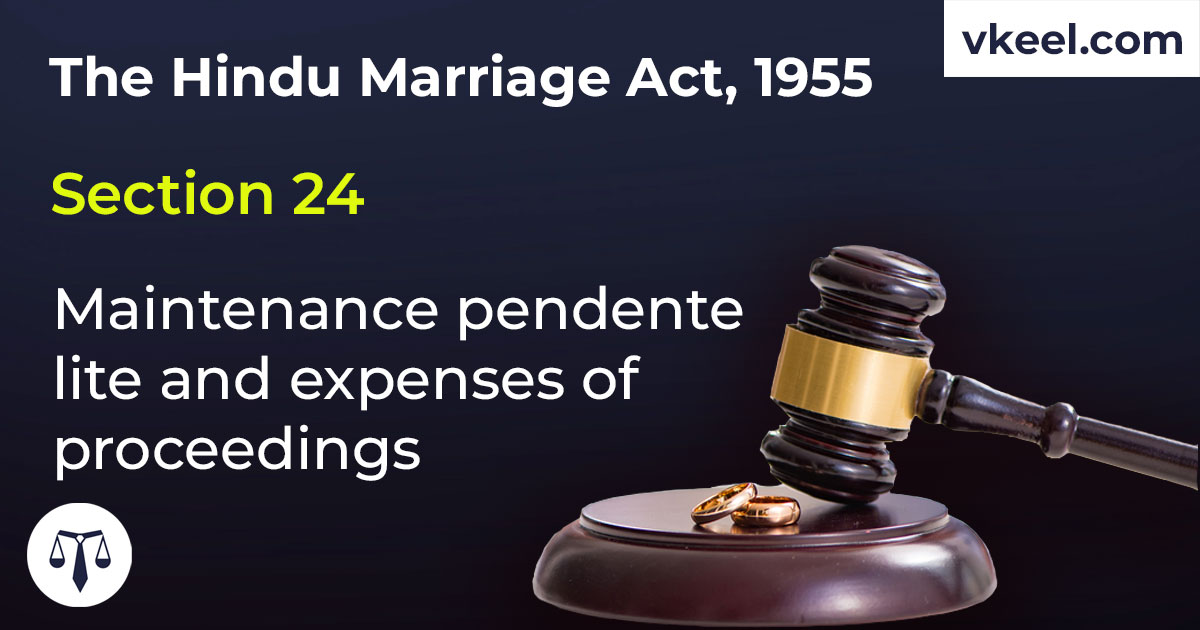Section 3 Hindu Marriage Act 1955- Definitions
By Vkeel Team
Description
“Section 3 Hindu Marriage Act 1955”
In this Act, unless the context otherwise requires,
(a) the expressions “custom” and “usage” signify any rule which, having been continuously and uniformly observed for a long time, has obtained the force of law among Hindus in any local area, tribe, community, group or family:
Provided that the rule is certain and not unreasonable or opposed to public policy; and
Provided further that in the case of a rule applicable only to a family it has not been discontinued by the family;
(b) “district court” means, in any area for which there is a city civil court, that court, and in any other area the principal civil court of original jurisdiction, and includes any other civil court which may be specified by the State Government, by notification in the Official Gazette, as having jurisdiction in respect of the matters dealt with in this Act;
(c) “full blood” and “half blood”— two persons are said to be related to each other by full blood when they are descended from a common ancestor by the same wife and by half blood when they are descended from a common ancestor but by different wives;
(d) “uterine blood”—two persons are said to be related to each other by uterine blood when they are descended from a common ancestress but by different husbands;
Explanation.—In clauses (c) and (d), “ancestor” includes the father and “ancestress” the mother;
(e) “prescribed” means prescribed by rules made under this Act;
(f) (i) “sapinda relationship” with reference to any person extends as far as the third generation (inclusive) in the line of ascent through the mother, and the fifth (inclusive) in the line of ascent through the father, the line being traced upwards in each case from the person concerned, who is to be counted as the first generation;
(ii) two persons are said to be sapindas of each other if one is a lineal ascendant of the other within the limits of sapinda relationship, or if they have a common lineal ascendant who is within the limits of sapinda relationship with reference to each of them;
(g) “degrees of prohibited relationship”two persons are said to be within the “degrees of prohibited relationship”
(i) if one is a lineal ascendant of the other; or
(ii) if one was the wife or husband of a lineal ascendant or descendant of the other; or
(iii) if one was the wife of the brother or of the father’s or mother’s brother or of the grandfather’s or grandmother’s brother of the other; or
(iv) if the two are brother and sister, uncle and niece, aunt and nephew, or children of brother and sister or of two brothers or of two sisters;
Explanation.—For the purposes of clauses (f) and (g), relationship includes—
(i) relationship by half or uterine blood as well as by full blood;
(ii) illegitimate blood relationship as well as legitimate;
(iii) relationship by adoption as well as by blood; and all terms of relationship in those clauses shall be construed accordingly
Section 3 Hindu Marriage Act 1955 defines the various terms used in the Act.
Section 3 Hindu Marriage Act 1955 is a law that governs the marriage of Hindus in India. It defines the various terms used in the Act and provides the legal framework for the solemnization of Hindu marriages.
The Act defines a Hindu as “any person who is a Hindu by religion in any of its forms or developments, including a Virashaiva, a Lingayat or a follower of the Brahmo, Prarthana or Arya Samaj”. This definition is important as it ensures that all Hindus, regardless of their religious beliefs, are protected under the Act.
Section 3 Hindu Marriage Act 1955 also defines a “Hindu marriage” as a marriage between two Hindus, solemnized in accordance with the customary ceremonies and rites. This definition is important as it ensures that all Hindu marriages are recognized and protected under the Act.
The Act further defines the various parties involved in a Hindu marriage. These include the bride, the bridegroom, the father of the bride, the father of the bridegroom, the guardian of the bride, the guardian of the bridegroom, and the witnesses. This definition is important as it ensures that all parties involved in a Hindu marriage are recognized and protected under the Act.
Section 3 Hindu Marriage Act 1955 also defines the various rights and obligations of the parties involved in a Hindu marriage. These include the right to maintenance, the right to inheritance, the right to divorce, and the right to remarriage. This definition is important as it ensures that all parties involved in a Hindu marriage are protected and their rights are respected.
Finally, the Act defines the various remedies available to the parties involved in a Hindu marriage. These include the right to seek a judicial separation, the right to seek a divorce, and the right to seek a restitution of conjugal rights. This definition is important as it ensures that all parties involved in a Hindu marriage are protected and their rights are respected.
In conclusion, the definitions of the various terms used in the Hindu Marriage Act 1955 are important as they ensure that all parties involved in a Hindu marriage are protected and their rights are respected. The definitions also provide the legal framework for the solemnization of Hindu marriages and ensure that all Hindus, regardless of their religious beliefs, are protected under the Act.
Description Source: indiacode
Disclaimer:
The information provided in the article is for general informational purposes only, and is not intended to constitute legal advice or to be relied upon as a substitute for legal advice. Furthermore, any information contained in the article is not guaranteed to be current, complete or accurate. If you require legal advice or representation, you should contact an attorney or law firm directly. We are not responsible for any damages resulting from any reliance on the content of this website.

